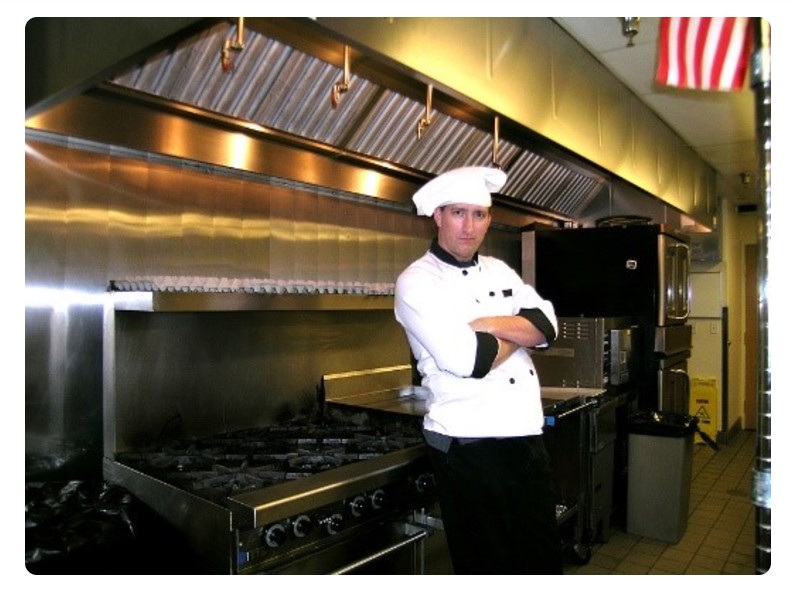
Are you looking to break into the commercial cleaning industry or expand your existing business? A hood cleaning service training program is the perfect place to start. Proper training not only equips you with essential skills but also helps you provide safer and more efficient services to your clients. Commercial kitchen exhaust cleaning is a growing industry, and certified professionals are in high demand.
What Is a Hood Cleaning Service Training Program?
A hood cleaning service training program is a structured course designed to teach individuals how to clean and maintain commercial kitchen hoods, ducts, and exhaust systems. These components are essential for ensuring proper ventilation and fire prevention in busy kitchens.
The training combines classroom instruction with hands-on practice to ensure you’re well-prepared to handle real-world challenges. From understanding the basics of grease removal to navigating regulatory requirements, the program covers everything you need to succeed.
Why Is Hood Cleaning Important?
Dirty kitchen exhaust systems pose significant risks to businesses:
- Fire Hazards: Grease build-up in hoods and ducts is highly flammable. Routine cleaning reduces the risk of fires.
- Air Quality Concerns: Clogged systems result in poor ventilation, which can affect the health of kitchen staff.
- Regulatory Compliance: Local and national regulations, like NFPA 96, require regular maintenance of commercial kitchen exhaust systems. Failing to comply can lead to hefty fines or even business closure.
- Efficiency: Clean exhaust systems operate more efficiently, saving energy and reducing long-term maintenance costs for clients.
By completing a training program, you’ll have the skills to address these critical issues, making you an asset to your clients.
Benefits of a Hood Cleaning Service Training Program
Gain Certification
One of the most significant advantages of enrolling in a hood cleaning program is certification. Certifications validate your skills and knowledge, giving you an edge over competitors. Many clients and employers specifically seek certified professionals for their expertise and reliability.
Hands-On Learning
Training programs include practical sessions where you’ll work with real equipment and scenarios. This experience prepares you for the challenges of on-the-job cleaning and ensures you feel confident handling different situations.
Learn Safety Protocols
The training emphasizes safety, teaching you to handle hazardous materials and avoid accidents during cleaning. This knowledge protects you and ensures the safety of kitchen staff and customers.
Understand Regulatory Standards
Programs provide in-depth knowledge of fire codes, safety regulations, and industry standards. This ensures your services are compliant, helping clients avoid penalties and legal issues.
Boost Career Prospects
With a growing demand for hood cleaning services, trained professionals have ample opportunities. Whether you’re starting your own business or joining an established company, this training lays the foundation for success.
What to Expect from a Training Program
Core Topics
A comprehensive hood cleaning service training program typically covers:
- System Anatomy: Understand the components of kitchen exhaust systems, including hoods, ducts, and fans.
- Cleaning Techniques: Learn step-by-step methods to remove grease and debris safely and effectively.
- Chemical Use: Get familiar with cleaning agents, their applications, and safe disposal practices.
- Fire Prevention: Identify fire risks and implement preventive measures during the cleaning process.
- Inspection Procedures: Gain the skills to inspect systems for wear, damage, and compliance with regulations.
Duration and Format
Programs can last from one day to several weeks, depending on the curriculum’s depth. Many training providers offer flexible options, including in-person workshops and online modules. Choose a format that fits your schedule and learning style.
Certification Process
Upon completing the program, you’ll typically need to pass an exam. The certification you receive afterward demonstrates your proficiency and dedication to maintaining high standards.
How to Choose the Best Program
Accreditation
Select a program accredited by reputable industry organizations. This ensures the training meets industry standards and prepares you for certification exams.
Comprehensive Curriculum
Review the course outline to ensure it covers both theoretical knowledge and practical skills. A well-rounded curriculum is essential for mastering this trade.
Cost vs. Value
While cost is an important factor, prioritize programs that offer quality instruction, hands-on experience, and certification over cheaper options with limited benefits.
Location and Flexibility
If you prefer in-person learning, consider the program’s proximity to your area. Alternatively, look for online options that offer live or recorded classes for added convenience.
Career Opportunities
Independent Contractor
Many professionals use their training to start independent hood cleaning businesses. With certification, you can attract a steady stream of clients, including restaurants and catering facilities.
Cleaning Technician
Join an established cleaning company and work as a certified technician. These roles often offer a stable income and opportunities for advancement.
Expand Existing Services
If you already own a cleaning business, adding hood cleaning services can broaden your offerings and increase your revenue.
Tools and Techniques Covered in Training
- Scrapers and Brushes: Learn to use manual tools for removing hardened grease.
- Pressure Washers: Master high-pressure cleaning methods for thorough results.
- Degreasers and Cleaning Agents: Understand how to choose and apply the right chemicals for different surfaces.
- Personal Protective Equipment (PPE): Stay safe with gloves, masks, and protective clothing.
Overcoming Challenges in the Field
- Tough Grease Deposits: Learn advanced techniques to handle even the toughest grease build-up.
- Hard-to-Reach Areas: Training programs teach strategies for cleaning complex systems without compromising safety.
- Tight Deadlines: Develop time-management skills to complete jobs efficiently without sacrificing quality.
The Importance of Ongoing Education
The industry evolves with new tools, regulations, and techniques. By attending refresher courses and workshops, you can stay competitive and maintain high service standards.
Conclusion
A hood cleaning service training program is an essential step for anyone pursuing a career in commercial kitchen cleaning. The skills and certifications you gain will make you a trusted professional in the field. Whether you’re starting from scratch or expanding your business, this training equips you to provide exceptional service, ensuring safety and compliance for your clients.
Don’t wait—take the first step toward a successful career today. Enroll in a hood cleaning service training program and build a future in this vital industry!



